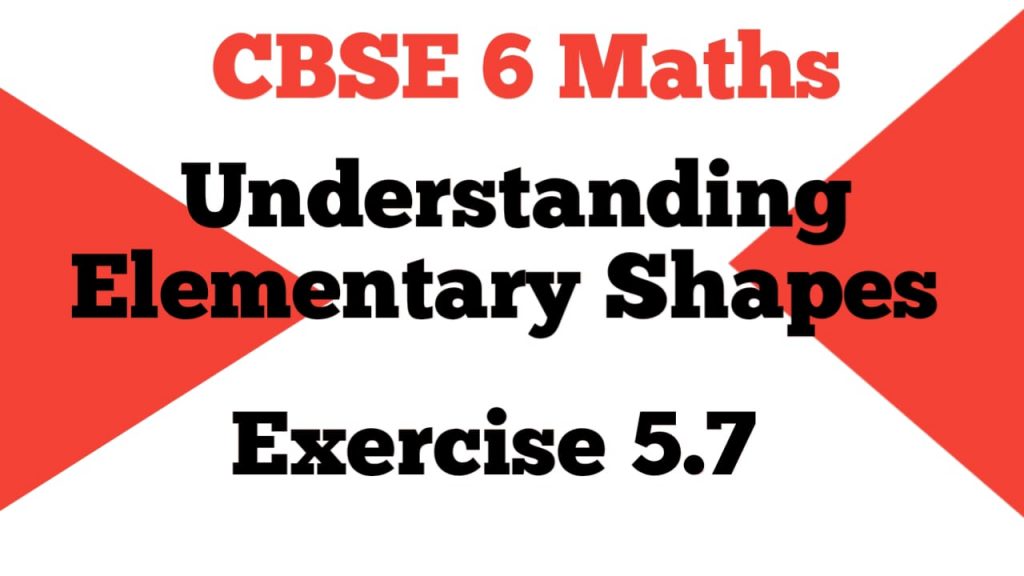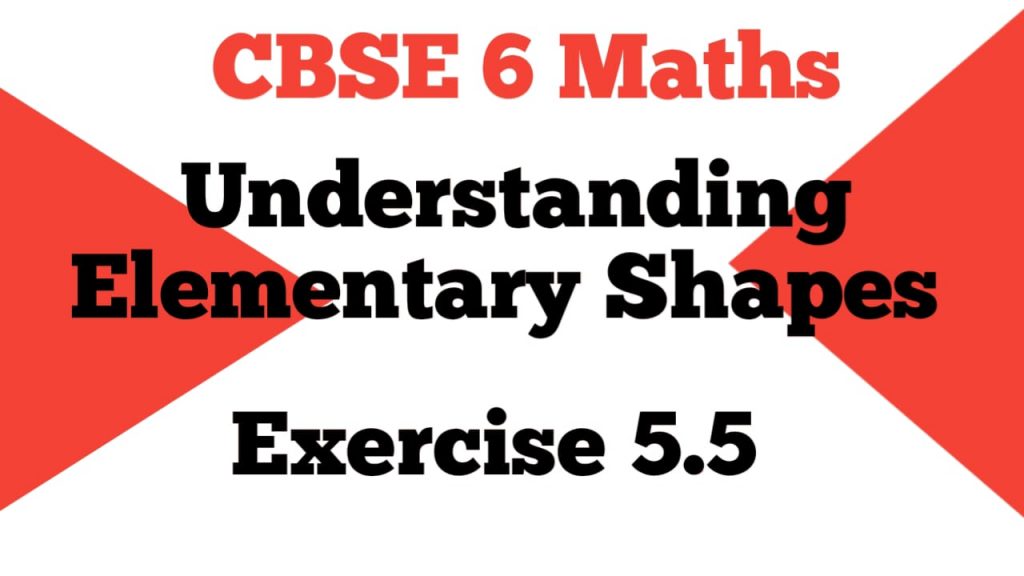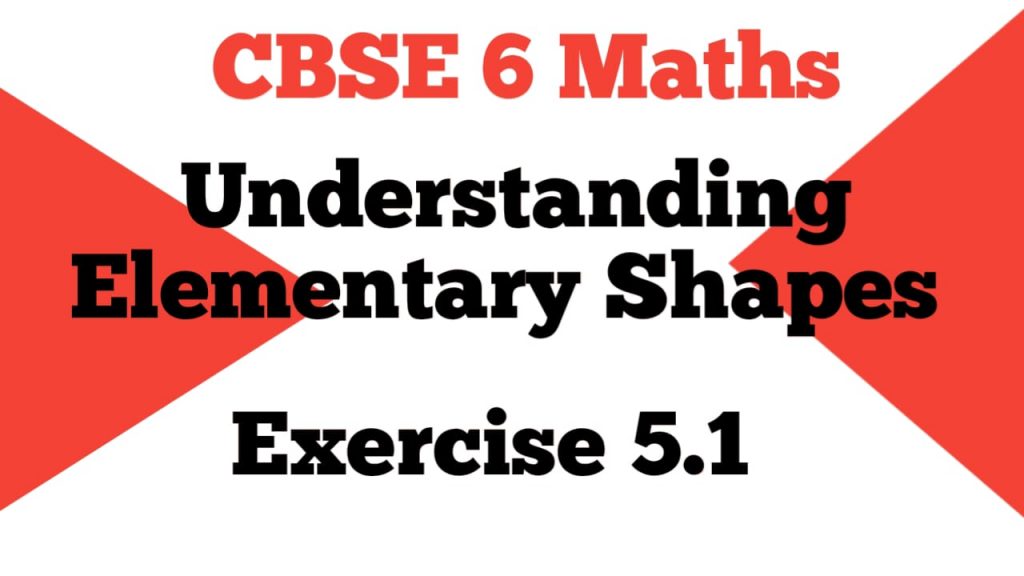ncert solutions std 6
NCERT Solutions Class 6 Maths Chapter 7 Fractions Exercise 7.3
Fractions Exercise 7.3 1). Write the fractions. Are all these fractions equivalent? Answer: b). Answer: 2). Write the fractions and pair up the equivalent fractions from each row. Answer: 1). a) ↔ (ii) 2). b) ↔ (iv) 3). c) ↔ (i) 4). d) ↔ (v) 5). e) ↔ (i) 3). Replace □ in …
NCERT Solutions Class 6 Maths Chapter 7 Fractions Exercise 7.3 Read More »
![]()
NCERT Solutions Class 6 Maths Chapter 6 Integers Exercise 6.3
Integers Exercise 6.3 1). Find (a) 35 – (20) (b) 72 – (90) (c) (– 15) – (– 18) (d) (–20) – (13) (e) 23 – (– 12) (f) (–32) – (– 40) Answer: (a) 35 – (20) 35 – (20) = 35 – 20 = 15 (b) 72 …
NCERT Solutions Class 6 Maths Chapter 6 Integers Exercise 6.3 Read More »
![]()
NCERT Solutions Class 6 Maths Chapter 5 Understanding Elementary Shapes Exercise 5.7
Understanding Elementary Shapes Exercise 5.7 Questions with (*) sign are open-ended questions. 1). Say True or False. (a). Each angle of a rectangle is a right angle. (b). The opposite sides of a rectangle are equal in length. (c). The diagonals of a square are perpendicular to one another. (d). All the sides of a …
NCERT Solutions Class 6 Maths Chapter 5 Understanding Elementary Shapes Exercise 5.7 Read More »
![]()
NCERT Solutions Class 6 Maths Chapter 5 Understanding Elementary Shapes Exercise 5.6
Understanding Elementary Shapes Exercise 5.6 1). Name the types of following triangles: (a). Triangles with lengths of sides 7 cm, 8 cm and 9 cm. (b) ∆ABC with AB = 8.7 cm, AC = 7 cm and BC = 6 cm. (c). ∆PQR such that PQ = QR = PR = 5 cm. (d). ∆DEF …
NCERT Solutions Class 6 Maths Chapter 5 Understanding Elementary Shapes Exercise 5.6 Read More »
![]()
NCERT Solutions Class 6 Maths Chapter 5 Understanding Elementary Shapes Exercise 5.5
Understanding Elementary Shapes Exercise 5.5 1). Which of the following are models for perpendicular lines: (a). The adjacent edges of a table top. (b). The lines of a railway track. (c). The line segments forming the letter ‘L’. (d). The letter V. Answers: (a). The adjacent edges of a table top. Perpendicular lines. (b). …
NCERT Solutions Class 6 Maths Chapter 5 Understanding Elementary Shapes Exercise 5.5 Read More »
![]()
NCERT Solutions Class 6 Maths Chapter 5 Understanding Elementary Shapes Exercise 5.4
Understanding Elementary Shapes Exercise 5.4 Questions with (*) sign are open-ended questions. 1). What is the measure of (i) a right angle? (ii) a straight angle? (i) the measure of a right angle is 900. (ii) the measure of a straight angle is 1800. 2). Say True or False: a). The measure of an acute …
NCERT Solutions Class 6 Maths Chapter 5 Understanding Elementary Shapes Exercise 5.4 Read More »
![]()
NCERT Solutions Class 6 Maths Chapter 5 Understanding Elementary Shapes Exercise 5.3
Understanding Elementary Shapes Exercise 5.3 Questions with (*) sign are open-ended questions. 1). Match the following: (i) Straight angle a). less than one-fourth of a revolution (ii) Right angle b). More than half a revolution (iii) Acute angle …
NCERT Solutions Class 6 Maths Chapter 5 Understanding Elementary Shapes Exercise 5.3 Read More »
![]()
NCERT Solutions Class 6 Maths Chapter 5 Understanding Elementary Shapes Exercise 5.2
Understanding Elementary Shapes Exercise 5.2 Questions with (*) sign are open-ended questions. 1). What fraction of a clockwise revolution does the hour hand of a clock turn through when it goes from a). 3 to 9 b). 4 to 7 c). 7 to 10 d). 12 to 9 e). 1 to 10 f). 6 to …
NCERT Solutions Class 6 Maths Chapter 5 Understanding Elementary Shapes Exercise 5.2 Read More »
![]()
NCERT Solutions Class 6 Maths Chapter 5 Understanding Elementary Shapes Exercise 5.1
Understanding Elementary Shapes Exercise 5.1 Questions with (*) sign are open-ended questions. 1). What is the disadvantage in comparing line segments by mere observation? The disadvantage in comparing line segments by mere observation is that there may be possible errors in viewing. 2). Why is it better to use a divider than …
NCERT Solutions Class 6 Maths Chapter 5 Understanding Elementary Shapes Exercise 5.1 Read More »
![]()






